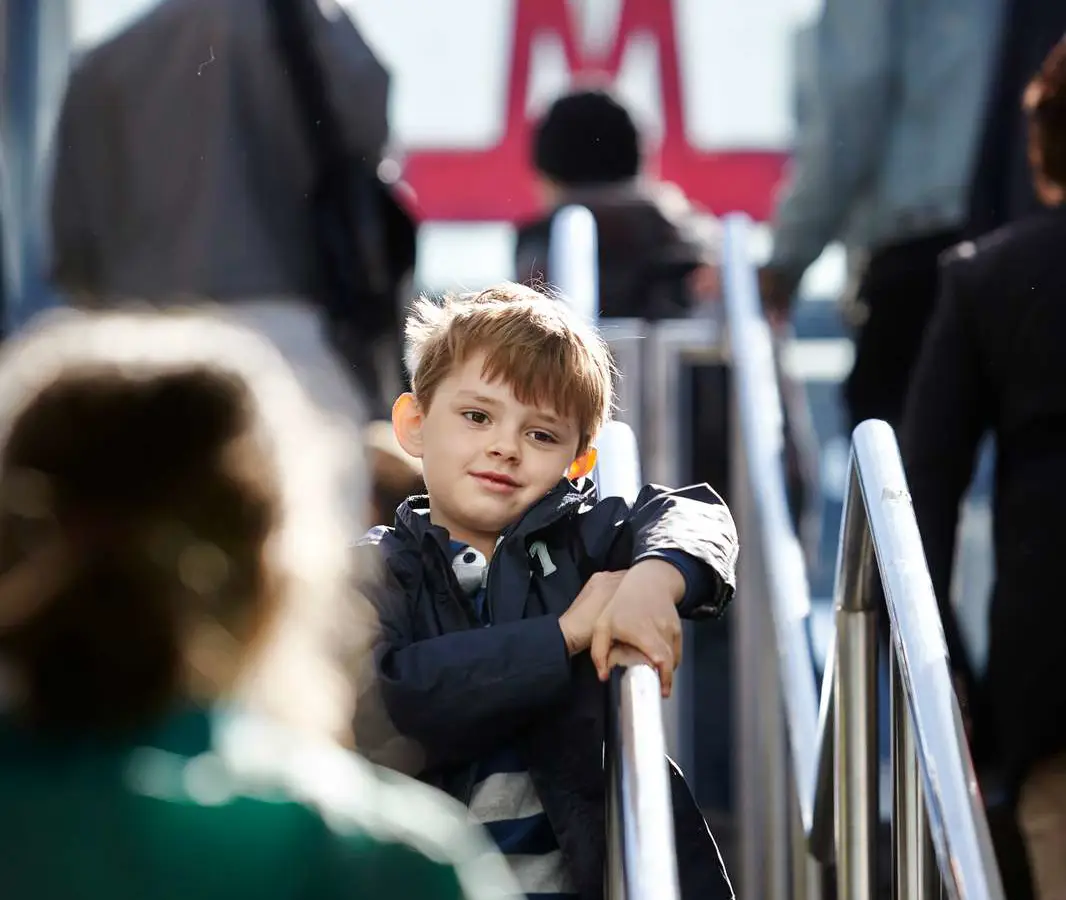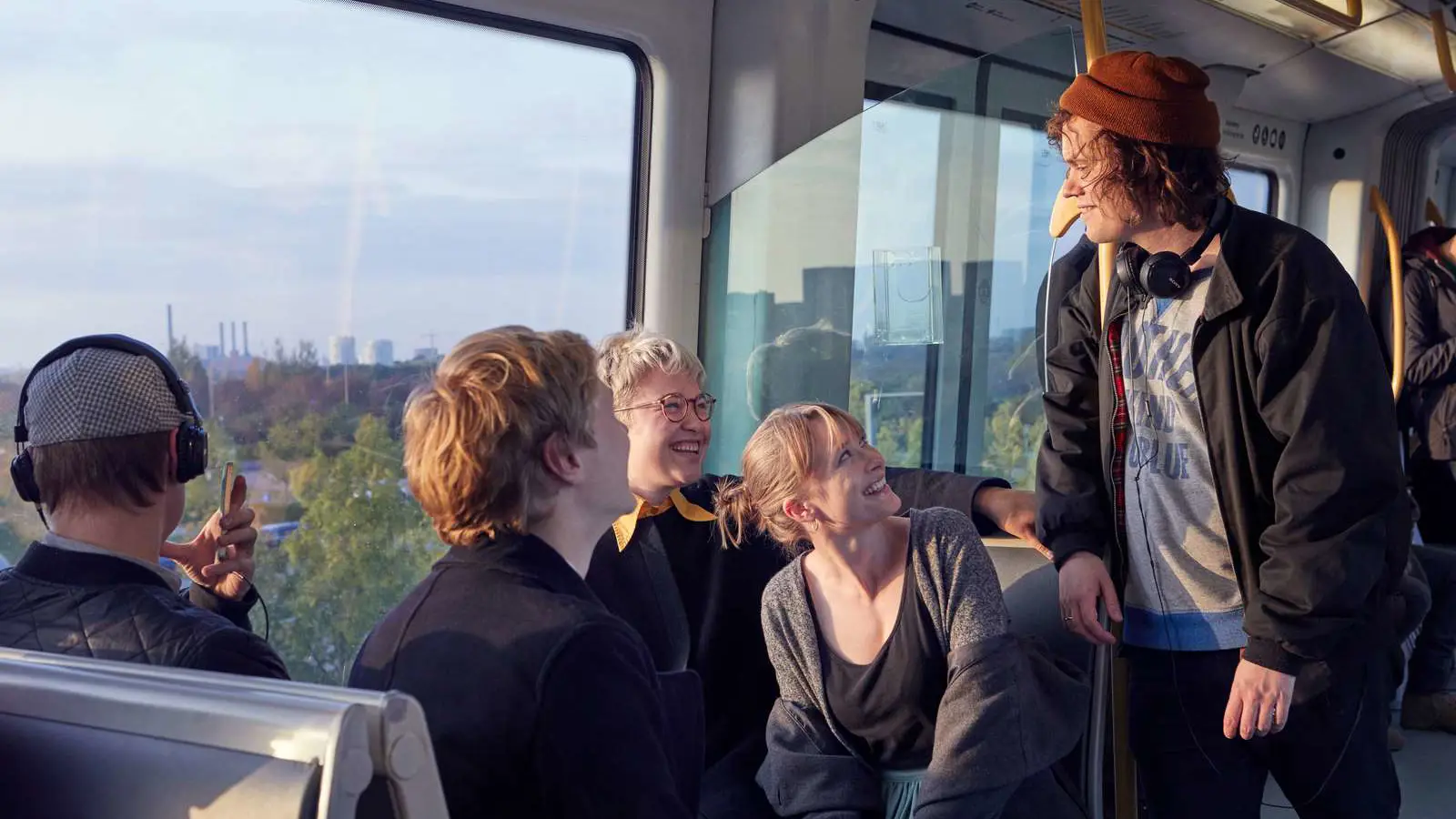For more than two decades it has been possible to travel through the city of Copenhagen by Metro.
The first section opened in October 2002 – from Nørreport to Vestamager and Lergravsparken. In May 2003, the stretch from Nørreport to Frederiksberg opened, and from October it was possible to travel by Metro all the way to Vanløse. That year also saw the start of work on the third stage out to the airport, and the East Amager line opened for passenger traffic on 28 September 2007, when Crown Prince Frederik cut the red ribbon at Copenhagen Airport Station.
Back then, the Metro only ran through 21 kilometres of Copenhagen and Frederiksberg. Since then, many kilometres of rail and new stations have been added to the Metro network. Here is a historical overview of the creation of Copenhagen’s Metro:
The Company is Established
In 1992, the Danish Parliament passes the Ørestad Act. This specifies that a light railway should be constructed in Copenhagen. The following year, in 1993, Ørestadsselskabet is formed to undertake the project. In 1995, Ørestadsselskabet, together with Frederiksberg Municipality, sets up the Frederiksbergbaneselskabet. Later the same year, the Copenhagen County Council and Ørestadsselskabet set up the Østamagerbaneselskabet to construct the stage out to the airport. They plan, carry out preliminary studies and select contractors for the first two stages. The stretch from Frederiksberg to Vanløse also begins to run where previous S-Trains had run.
1996
In October contracts are signed with the COMET consortium (Copenhagen Metro Construction Group) for the building and construction work, and with Italian Ansaldo STS for the transport system – i.e. tracks, trains and all technical control and electrical supply systems. Construction of the elevated track in Ørestad gets under way. Part of the preparations involve clearing munitions from former military land. In the City, archaeologists from the Museum of Copenhagen start to excavate at Kongens Nytorv and Nørreport. At Nørreport they find the remains of the old bridge – dating from as far back as the 1600s. The excavation works continue right through to 1998.
1997
Construction of the tunnel begins. Work sites are established in tunnel stations and shafts. At Islands Brygge a chamber is prepared, from which the two tunnel boring machines begin to make their way underground beneath Copenhagen. The boring machines arrive in December and are christened Liva and Betty – after renowned actresses Liva Weel and Betty Nansen.
1998
Liva and Betty start their drilling work. They start from Islands Brygge and head towards Stadsgraven. In August the boring machines are raised out of the new tunnels and transferred to Havnegade, and during the autumn they continue towards Strandlodsvej in East Amager. In Italy, production of the first train set begins. In total, 34 trains are produced for the original Metro system.
1999
In May the first train set arrives at the Control and Maintenance Centre in Ørestad, and trial runs begin on a special test track there.
2000
Liva and Betty turn their drilling heads the other way. They are transferred to Havnegade and start drilling in the direction of Nørreport. Again, it is Liva who is first to reach the goal in May – quickly followed by Betty, who gets there in mid-June. On the elevated track in Ørestad they begin testing trains.
2001
The tunnel boring machines continue their work as far as Falkoner Allé in Frederiksberg and put the last ring in place in February. Train sets arrive from Italy in a steady stream, and in November trains are tested for the first time in the tunnel between the stations, Islands Brygge and Lergravsparken.
2002
The preparations for the opening in October are well under way. The electrical supply and control systems are constructed and tested, station forecourts are established, and the operating organisation Metro Service is set up. From June until the opening on 19 October 2002 the entire line is tested. As early as August preparations begin for construction of the East Amager line. Østamagerbaneselskabet sign a contract with Hoffmann-Arkil-Novejfa for building and construction work and with INTABB v/ABB for electrotechnical assignments.
2003-2007
East Amager line built. Work gets under way in spring 2004, but as early as autumn 2003 supply lines for heat, electricity, water, etc. are being re-laid. The line is built on embankments, in open cuttings and across open ground, so the tunnel boring machines are not needed here. On the other hand, huge quantities of Swedish granite are used to fill the gabion walls that enclose the line. From spring 2007, trial runs begin that last until the opening of the line in September.
The East Amager line runs along part of the historic Amager line. The Amager line opened in 1907 and went on to carry passengers and goods for almost a hundred years.
2008-2020
While the Metro was now running from multiple parts of Amager through the inner city and all the way to Vanløse, Copenhagen still needed a Metro that would connect “the bridges”, Østerbro, Vesterbro and Nørrebro to the Metro network. A massive project called Cityringen was undertaken by The Copenhagen Metro, which meant 17 new stations would be built to connect these three neighborhoods, the inner city and Frederiksberg. In September 2019, the M3 line opened and brought the total number of Metro stations to 37.
Not even half a year later, in March 2020, the M4 northern extension opened with the stations Nordhavn and Orientkaj.
2020-2024
While the Metro network had expanded with 39 stations in total, the older parts and urban development areas of Sydhavn as well as Valby were still not connected to the Metro network. The construction of five new underground stations started in 2018, and when the extension of the M4 line from København H to Copenhagen South opened in June 2024, the total number of stations increased to 44. Four months after the opening, the southern extension proved a valuable addition to the network, exceeding every expectation of passenger numbers on the new stations.
Where will the next Metro line be? When will it open? And is it even decided yet? You can read the latest news about future Metro extensions and lines here.

